During the period 1914 to 1932 in the USA there was a violent and extensive campaign of IED attacks from the anarchist group the “Galleanists”. This IED campaign is largely now forgotten but there are important lessons. The issues are slightly hard to discern because of aspects of the crimes that remain unsolved but with 20/20 hindsight it seems sensible to attribute key attacks to this group. We should also remember that this period in history was complex and also saw IED attacks in the US from German saboteurs, from local home-grown labor disputes and from organised crime.
The politics of the time were heated and radical. The leader of this particular Anarchist group was the Italian Luigi Galleani, and he was active in the US between 1901 and 1919.
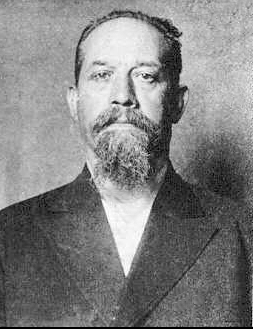
Galleani very much pushed the idea of “propaganda of the deed’ as described a couple of decades earlier by Johann Most. Galleani was a powerful orator and writer with an international reputation before he got to the US in 1901, aged 40. His intense activity continued, and he wrote and published anarchist and revolutionary literature extensively. Galleani always championed “direct action” and praised those who committed violent acts. Galleani published a bomb making guide, oddly called “Health is in You!”, which sold for 25 cents. The guide is interesting reading though with a technical error that allegedly cost the life of at least one enthusiastic student bomb maker making nitro-glycerine.
Galleani was deported to Italy in 1919 but continued his revolutionary work. His followers mounted a number of IED attacks and some significant IED campaigns in the US from about 1914 onwards. Here’s an outline summary:
- 1914 – Several IED attacks in New York including St Patrick’s Cathedral and the placement of an IED in Tombs Police court under the chair of a Magistrate.
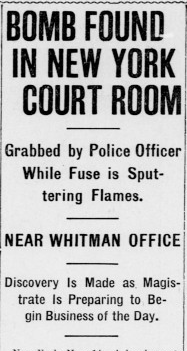
- 1914 – Premature explosion on Lexington Avenue in a bomb making facility. killing four anarchists.
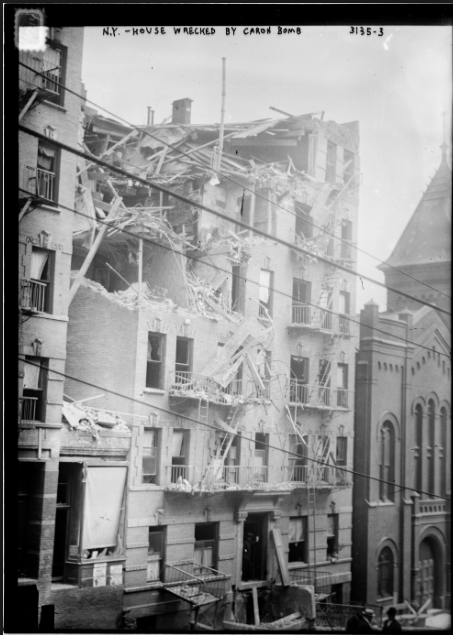
- 1915 – Another Plot to blow up St Patrick’s cathedral in New York, intercepted by NYPD Bomb Squad commander Thomas Tunney
- 1916 – Mass poisoning attempt with arsenic, Chicago. The perpetrator was never caught.
- 1916 – Bomb attack on a Boston police station
- 1916 – Galleanists now believed to have been responsible for the San Francisco Preparedness Day Bombing on 22 July, which killed ten people. Local labor activists were convicted but decades later pardoned and the evidence against them discredited. No other perpertrators were brought to justice. Many historians now attribute blame to the Galleanists. The device was reported as dynamite or TNT packed into metal pipes in a suitcase with a clock as a timing component. However examination of the evidence years later suggest much less certainty about the construction of the device.
- 1917 – A bomb placed in a church in Milwaukee was recovered to a Milwaukee police station where is exploded killing 9 policemen and a female civilian. The perpetrator was never caught
- 1917-1918 Other bombings across the US attributed to the Galleanists.
- 1918 – A number of IEDs placed in the homes of Philadelphia public officials
- 1919 – An IED being placed by four Galleanists in a Wool Mill exploded prematurely killing four of the perpetrators.
- 1919 – Further bombings
- 1919 – In late April 1919 a total of 36 dynamite IEDs were posted to a number of high profile individuals across the US in the mail. The bombs were intended to be delivered on May Day. No-one was killed but a senator’s housekeeper was badly injured opening one of the packages. No-one directly charged with the offence. The postal 36 IEDs were described as follows: The package was wrapped in brown paper. Inside the brown paper the package was again wrapped in green paper, stamped “Gimbel Brothers – Novelty samples”. This contained a cardboard box containing a six inch x three inch x one inch block of hollowed out wood, which held a stick of dynamite. A small vial of sulfuric acid was fastened to the wooden block next to three mercury fulminate blasting caps. Opening one end of the cardboard box (marked “open’) released a spring which broke the vial of acid, which dripped into the blasting caps, causing a detonation. I note that in some senses the initiation mechanism is similar to the acid initiated devices of Harry Orchard in 1903.
- 1919 – In June, the Galleanists exploded eight large IEDs nearly simultaneously in several different US cities. Each utilised about 25 pounds of Nitroglycerine, and was packed with shrapnel. Only two people were killed, – one a night-watchman and the other an anarchist who was laying a device when it exploded. Police traced the printer who had printed flyers left at the scene of the bombs. They arrested two men, Andrea Salsedo and Roberto Eliam. Salsedo was questioned (some reports suggest he was tortured). He then either jumped from a 14th floor window or was pushed by Elia. Elia refused to talk and was deported. The investigation stalled and the police used more aggressive tactics, including, allegedly, warrantless wire taps. No direct suspects were indicted but several hundred suspects were exported.
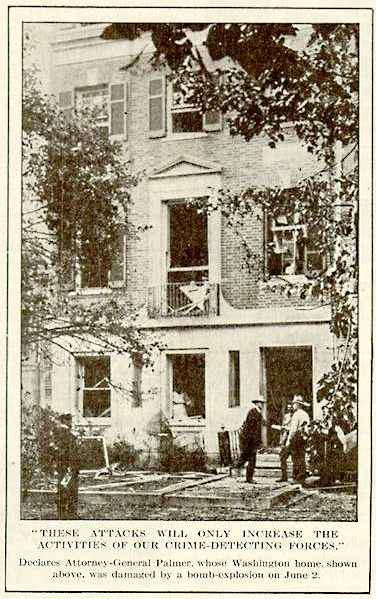
- 1920 – The Galleanist Mario Buda is believed to have built and detonated the Wall St bomb on 16 September, killing 38 people. The perpetrator was never brought to justice.
- 1927 – More bombings of court officials
- 1932 – Another bombing of a court official
To us, sitting here in 2014, some one hundred years after these bombings started, the concept of a radical revolutionary IED campaign, and significant violent industrial disputes in the USA is hard to fathom. I’m intrigued too that the revolutionary fervour of the times wasn’t “underground” as it would be today. Here’s useful evidence of that. In 1914 there was an explosion in an apartment occupied by anarchists in Lexington Avenue New York. Four anarchists died, after the IED apparently exploded as it was being constructed. This image below shows a very well attended public demonstration in New York in support of the dead anarchists. Bizarre by today’s terms, I think.
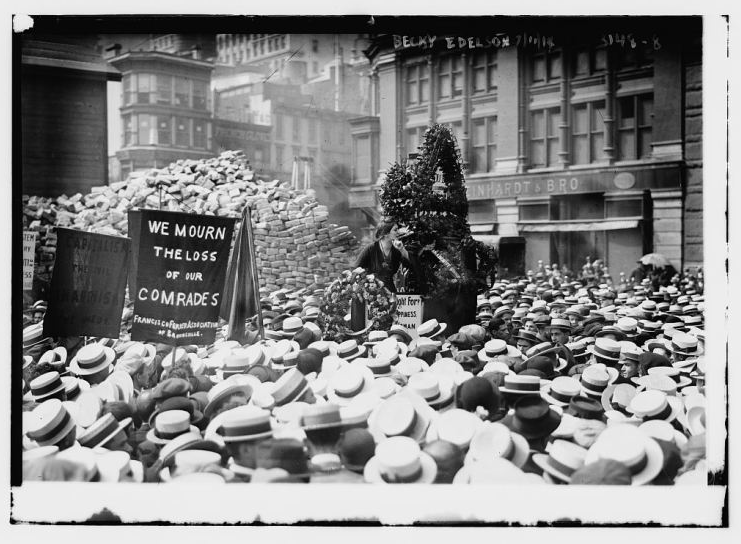
But the threat posed by the Galleanists was real, and while complex and occurring at the same time as other threats, there was clearly a public concern about their capabilities. I think that the logistics of planting 8 devices across the country is significant. I’m also surprised so few perpetrator were properly brought to justice.
The Galleanist campaign reinforces once again the fact that the USA, of all nations, has had a significant domestic experience of IEDs throughout its existence. Those who suggest that the USA only really came to terms with IEDs in the last decade are simply wrong.

Wonderful summary of an era in the US that is almost never seen in any history books. We tend to ignore historical terrorism at out peril. But we do and then wonder why it is happening now.